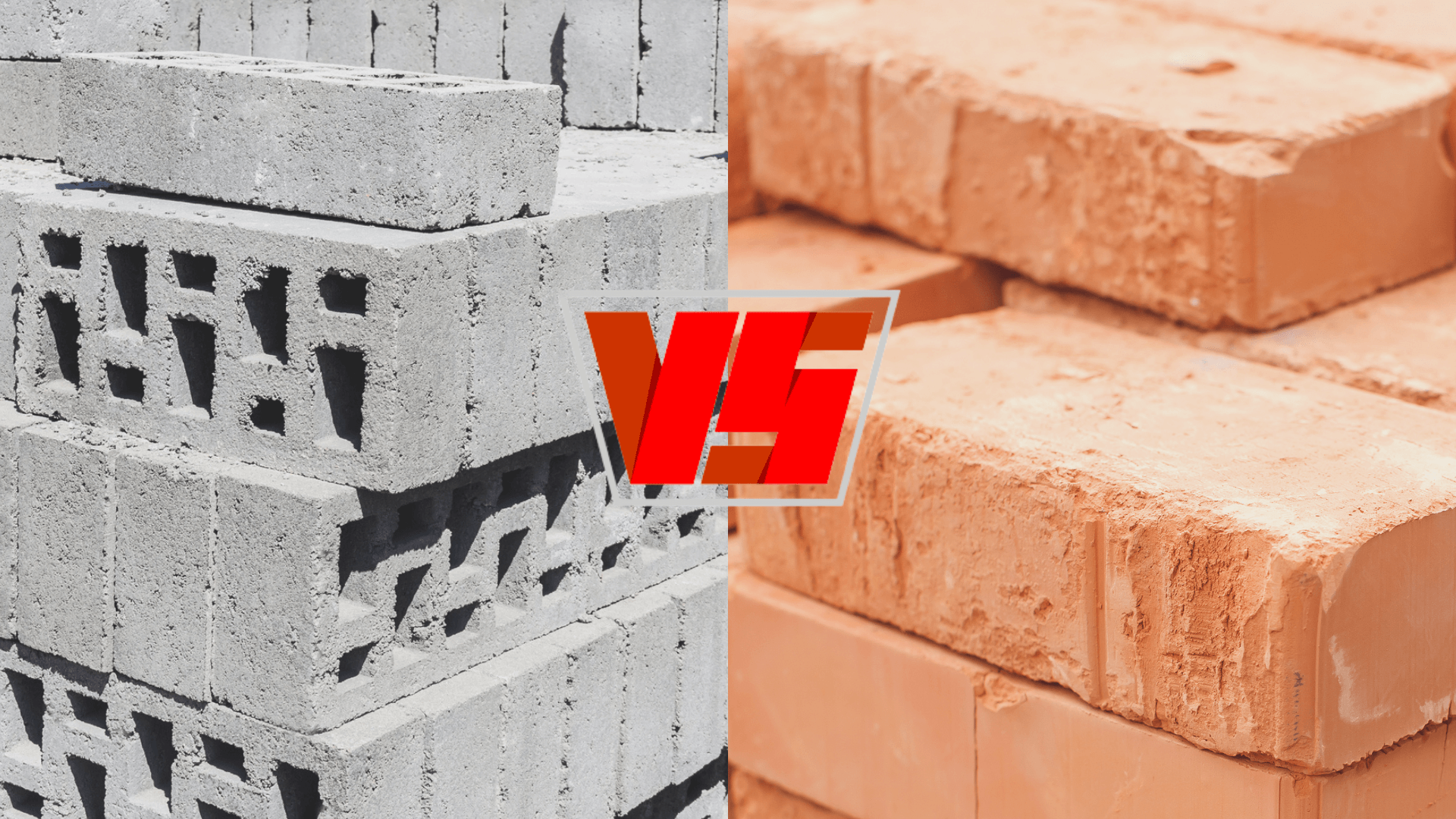Concrete Bricks vs Clay Bricks
Whilst both concrete and clay bricks are excellent choices for commercial buildings, both come with their own unique strengths and weaknesses.
Before getting into the fundamental differences between these two materials, it’s essential that we first understand the exact definitions of the two.

What is a Clay Brick?
One of the most popular building materials in use today, clay bricks range from the classic form of red brick to resistant engineering bricks and bespoke glazed bricks. Clay bricks are created by pressing wet clay into a mould and then drying and firing in a kiln. These types of bricks are one of the oldest building materials in the world, found across ancient structures spanning multiple continents.
What is a Concrete Brick?
A concrete brick is made using portland cement, water and other suitable aggregates. These are pressed into shape and then dry and harden into form. After curing and setting, these concrete bricks are ready to be used in construction.
Comparing Concrete Bricks With Clay Bricks
Compressive Strength
The compressive strength of a type of brick can become an essential factor in large buildings where bricks need to be able to sustain heavy loads on their own.
- Clay Bricks – average compressive strength ranges from 8,000 to 10,000 psi
- Concrete Bricks – average compressive strength ranges from 3,000 to 4,000 psi
Clay bricks are 2.5 to 3 times stronger than concrete bricks alone. However, it is important to note that the strength of any given brick, block or concrete wall is only as strong as the mortar holding it together. For example, mortars that are high in lime can only sustain 350 psi, while a high-cement mortar may hold 3,000 psi.
Rate of Absorption
Clay bricks have a rate of absorption of approximately 15-35 grams of moister per minute, per square inch. On the other hand, concrete bricks absorb between 40 and 80 grams per square inch. To summarise, this means that concrete bricks absorb approximately 2-3 times more moisture than their clay counterparts. Meaning after heavy rainfall, you may notice that your concrete bricks stay wet for days at a time.
Because of this high absorption rate, many manufacturers opt to add an integral water repellent to tackle the issues with a high absorption rate. However, this adds its own cost.
Accounting for Movement
With constantly changing and altering weather conditions, it should be no surprise that almost all building materials undergo some type of movement. For a clay building, this movement means a very gradual expansion over time, whereas in a concrete structure, there is often a very gradual shrinkage. These movements may be caused by various factors, including natural ground movement and thermal expansion.
Thankfully, many modern commercial buildings are often built with expansion joints which account for the natural forces placed upon construction materials, alleviating this problem from causing building owners any grief.
Colour and Texture
Bricks of both clay and concrete are available in a variety of colours and textures. Oftentimes you’ll find that a variety of textures is also available, along with the inclusion of internal holes for reinforcement. However, something to note about concrete bricks is that their colour fades much faster than that of clay.